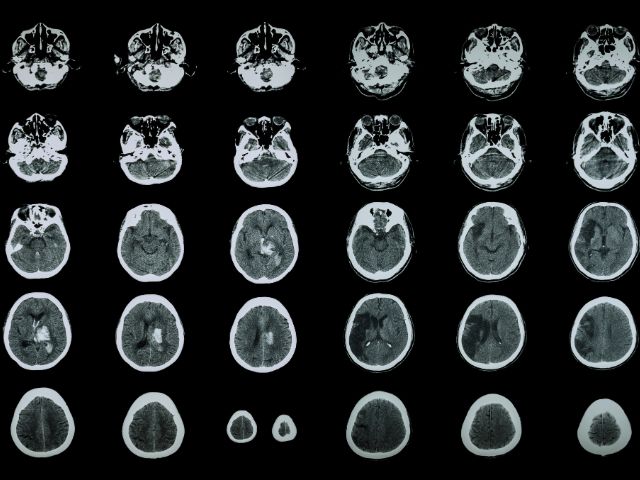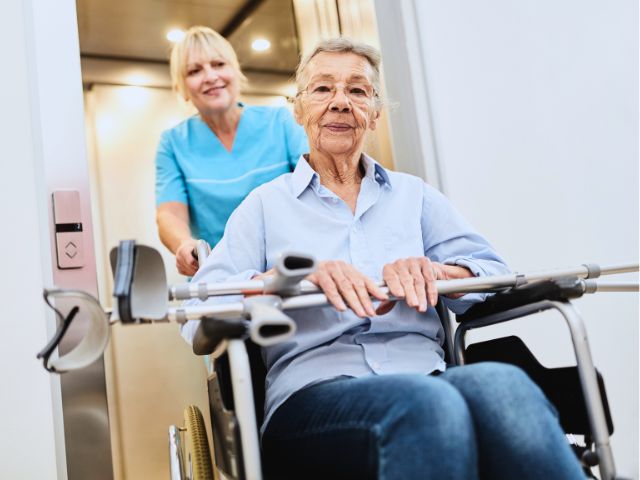NIHSS Instructions
1a – Level of Consciousness (LOC):
It is the examiner’s overall impression of patient alertness
Scale Definition
0 = Alert; keenly responsive
1 = Not alert; but arousable by minor verbal stimulation
2 = Not alert; requires strong or painful stimulation
3 = Responds only with reflex motor or autonomic effects, or totally unresponsive, flaccid, and areflexic
1b – LOC Questions:
It is based on patient’s answers on two specific questions – month and patient’s age.
Aphasic and stuporous patients are scored 2. Patients unable to speak due to intubation, orotracheal trauma, severe dysarthria from any cause, language barrier, or any other problem that is not secondary to aphasia are scored a 1.
Scale Definition
0 = Answers both questions correctly
1 = Answers one question correctly
2 = Answers neither question correctly
1c – LOC Commands:
The patient is asked to perform two tasks – close your eyes and make a fist. In general, you should try to pantomime so the patient receives your verbal and visual input.
Scale Definition
0 = Performs both tasks correctly
1 = Performs one task correctly
2 = Performs neither task correctly
2 – Best Gaze:
This NIHSS tests voluntary horizontal eye movements. Look at the position of the eyes at rest, and note any spontaneous eye movement. Move your finger horizontally, asking the patient to track your finger from side to side by moving the eyes only. For those with poor attention span, establish eye contact and move your face around the patient from side to side.
Scale Definition
0 = Normal
1 = Partial gaze palsy; gaze is abnormal in one or both eyes, but forced deviation or total gaze paresis is not present
2 = Forced deviation or total gaze paresis is not overcome by the oculocephalic maneuver
3 – Visual
Visual fields (upper and lower quadrants) are tested by confrontation, using finger counting or visual threat, as appropriate. You will be testing their peripheral vision, and you move a finger to the right and left and ask the patient to count fingers in all four quadrants. Patients who score three on LOC1a are tested using bilateral threat.
Scale Definition
0 = No visual loss
1 = Partial hemianopia
2 = Complete hemianopia
3 = Bilateral hemianopia (blind including cortical blindness)
4 – Facial Palsy
Ask or use pantomime to encourage the patient to show teeth/gums or to raise eyebrows and close eyes. Score symmetry of grimace in response to noxious stimuli in the poorly responsive patient.
Scale Definition
0 = Normal symmetrical movements
1 = Minor paralysis (flattened nasolabial fold, asymmetry on smiling)
2 = Partial paralysis (total or near-total paralysis of lower face)
3 = Complete paralysis of one or both sides (absence of facial movement in the upper and lower face)
5 – Motor Arm
Ask to extend the arms (palms down) 90 degrees (if sitting) or 45 degrees (if supine). Drift is scored if the arm falls before 10 seconds. The aphasic patient is encouraged to use urgency in the voice and pantomime, but not noxious stimulation.
Scale Definition
0 = No drift; limb holds 90 (or 45) degrees for full 10 seconds
1 = Drift; limb holds 90 (or 45) degrees, but drifts down before full 10 seconds; does not hit bed or other support
2 = Some effort against gravity; limb cannot get to or maintain (if cued) 90 (or 45) degrees, drifts down to bed, but has some effort against gravity
3 = No effort against gravity; limb falls
4 = No movement
UN = Amputation or joint fusion
6 – Motor Leg
Always test the leg in a supine position by holding the leg at 30 degrees. Drift is scored if the leg falls before 5 seconds. The aphasic patient is encouraged to use urgency in the voice and pantomime but not noxious stimulation.
Scale Definition
0 = No drift; leg holds 30 degree position for full 5 seconds
1 = Drift; leg falls by the end of the 5 second period but does not hit the bed
2 = Some effort against gravity; leg falls to bed by 5 seconds but has some effort against gravity
3 = No effort against gravity; leg falls to bed immediately
4 = No movement
UN = Amputation or joint fusion
7 – Limb Ataxia
This NIHSS assessment tests for evidence of unilateral cerebellar lesion, to distinguish a clinically significant incoordination from general weakness. The finger-nose-finger and heel-shin tests are performed on both sides. Ataxia is absent in patients who cannot understand or who are paralyzed.
Scale Definition
0 = Absent
1 = Present in one limb
2 = Present in two limbs
UN = Amputation or joint fusion
8 – Sensory
This one is tested with a series of pinpricks. Withdrawal from noxious stimulus is used in the obtunded or aphasic patient. Do not use any object other than a safety pin.
Scale Definition
0 = Normal
1 = Mild-to-moderate sensory loss; patient feels pinprick is less sharp or is dull on the affected side; or there is a loss of superficial pain with a pinprick, but the patient is aware of being touched
2 = Severe or total sensory loss; the patient is not aware of being touched in the face, arm, and leg
9 – Best Language
The patient is asked to describe what is happening in the cookie jar picture and the standard naming card by reading a series of sentences. If visual loss interferes with the tests, ask the patient to identify objects placed in the hand, repeat, and produce speech. The intubated patient should be asked to write.
Scale Definition
0 = Normal
1 = Mild-to-moderate aphasia; some obvious loss of fluency or facility of comprehension, but no significant limitation on ideas expressed or form of reductions
2 = Severe aphasia; all expressions are fragmentary or when you cannot identify card content from the patient’s response
3 = Mute, global aphasia; no usable speech or auditory comprehension
10 – Dysarthria
This one tests the patient’s articulation and clarity of speech.
Scale Definition
0 = Normal
1 = Mild-to-moderate dysarthria; some slurring but can be understood
2 = Severe dysarthria; patient cannot be understood in any meaningful way or mute
UN = Intubated or other physical barrier
11- Extinction and Inattention:
Ask the patient to close their eyes. Alternately, touch the patient’s left or right and ask the patient which side is being touched.
Scale Definition
0 = No abnormality
1 = Visual, tactile, auditory, spatial, personal inattention, or extinction to bilateral simultaneous stimulation in one of the sensory modalities
2 = Profound hemi-inattention or extinction to more than one modality; does not recognize own hand or orients to only one side of space
As soon as the tests are completed, add up the scores from each item to derive the total. The higher the score, the higher the impairment level.









